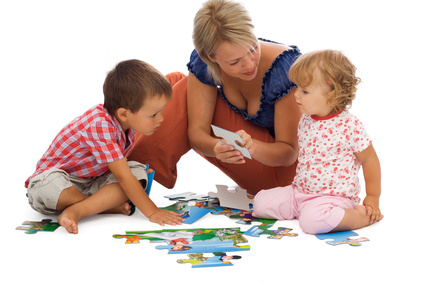Teaching Your Child Perspective Taking
 Children are not born with the ability to see the world through another person’s eyes. They have to learn to take another person’s perspective. If they do not learn this, they grow intolerant, self-centered, and uncaring. How can a parent help their children develop the ability to see various situations from another person’s perspective? Here are 4 suggestions:
Children are not born with the ability to see the world through another person’s eyes. They have to learn to take another person’s perspective. If they do not learn this, they grow intolerant, self-centered, and uncaring. How can a parent help their children develop the ability to see various situations from another person’s perspective? Here are 4 suggestions:- Model perspective taking in your life. Begin by modeling perspective taking in your relationship with your child. Take the time to see things from your child’s perspective. Allow your child to explain his point of view and then accept that point of view. His point of view may sound magical or immature–after all, he is a child. You may even disagree with his perspective, but accept it before you discuss it. As your child matures, use everyday situations to point out other people’s perspectives. For instance, discuss how friends might perceive something your child said or did, how teachers might perceive various students’ behavior, or how siblings might view an event differently than he does. Let your child explore and express various ideas without judgment, especially in his teen years. Definitely add your ideas into the mix and express your perspective, but do so without judging the ideas and values that he expresses.
- Explore the perspective of fictional characters. Start reading stories with your children when they are young. As they mature, discuss stories that you both read. In particular, discuss the characters in the story and their perspective of the situations they encounter. Explore how the story characters might feel, what circumstances and thoughts contribute to those feelings, and what resources the characters might use to deal with those feelings. Help your child develop an understanding of how that character’s perspective contributes to their actions and emotions. You can do this with movie characters as well. Engaging in these talks allows your child to begin to explore the perspective of another person, even if it is a fictional story character.
- Have some fun with perspective taking. I often play a game of “Happy, Mad, & Sad” with children at work. It is like “Paper, Scissors, & Rock;” but, instead of using hand signals, we make a happy face, a mad face, or a sad face. I score by saying happy beats sad, sad beats mad, and mad beats
 happy. It does not really matter which emotion beats the others, only that you get to practice seeing the expression on one another’s face—an important skill for perspective taking. You can also enjoy some people watching in a mall or park. Observe people walking by and quietly make up little stories about the character’s life and emotions. Fill the story with supporting observations. For instance, “those two just met in the ice cream shop because they still have their cones. They are walking in step with one another and smiling when they look at one another, so they have fallen deeply in love”…or “they walk in step with one another because they are both marching band members and can no longer walk out of sync…” Play a game while driving in which you name as many reasons as possible for why a car sped by or why another driver cut you off in traffic. Make note that each reason is merely a guess and an assumption, but represents a possible perspective of the other person. And, the perspective we focus on can lead to our becoming angry (“that jerk did that on purpose”), compassionate (“I hope they are not running to an emergency”), or cautious (“did they just fall asleep and drift into my lane?”). Remember, there is often more than one possible reason for a person’s behavior, more than one possible perspective. Encourage your child to consider those perspectives, even if they do not agree with them.
happy. It does not really matter which emotion beats the others, only that you get to practice seeing the expression on one another’s face—an important skill for perspective taking. You can also enjoy some people watching in a mall or park. Observe people walking by and quietly make up little stories about the character’s life and emotions. Fill the story with supporting observations. For instance, “those two just met in the ice cream shop because they still have their cones. They are walking in step with one another and smiling when they look at one another, so they have fallen deeply in love”…or “they walk in step with one another because they are both marching band members and can no longer walk out of sync…” Play a game while driving in which you name as many reasons as possible for why a car sped by or why another driver cut you off in traffic. Make note that each reason is merely a guess and an assumption, but represents a possible perspective of the other person. And, the perspective we focus on can lead to our becoming angry (“that jerk did that on purpose”), compassionate (“I hope they are not running to an emergency”), or cautious (“did they just fall asleep and drift into my lane?”). Remember, there is often more than one possible reason for a person’s behavior, more than one possible perspective. Encourage your child to consider those perspectives, even if they do not agree with them. - Finally, as your child experiences various circumstances in life, talk to him about the perspective of others in that situation as well. When you witness a commotion in a restaurant, help them observe not just the commotion but how those around the commotion respond. After watching a close football game, observe the winning team’s demeanor and the losing team’s demeanor. Watch the interviews with both teams and talk about each person’s response. When your child has a fight with a sibling, help him observe the impact on his siblings and you.
That is just 4 ideas to help teach your child perspective taking. You can practice each idea in your daily life, without even looking like you are teaching anything! By helping your child grow in their ability to take another person’s perspective, they will grow more understanding, accepting, and considerate. They will show more empathy and compassion toward those around them. They will mature, growing into adults with a strong character!